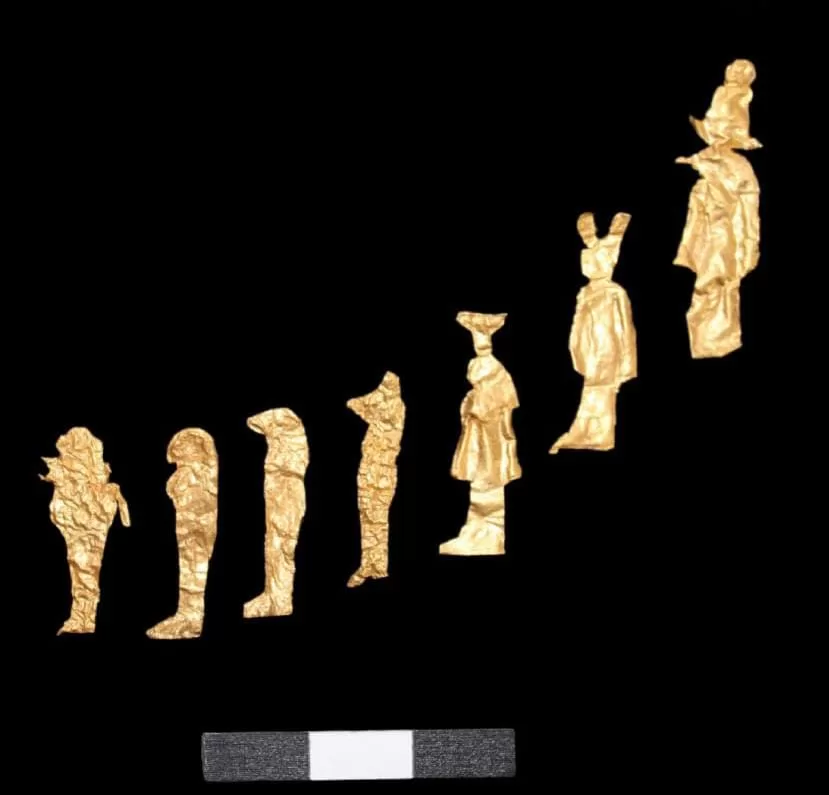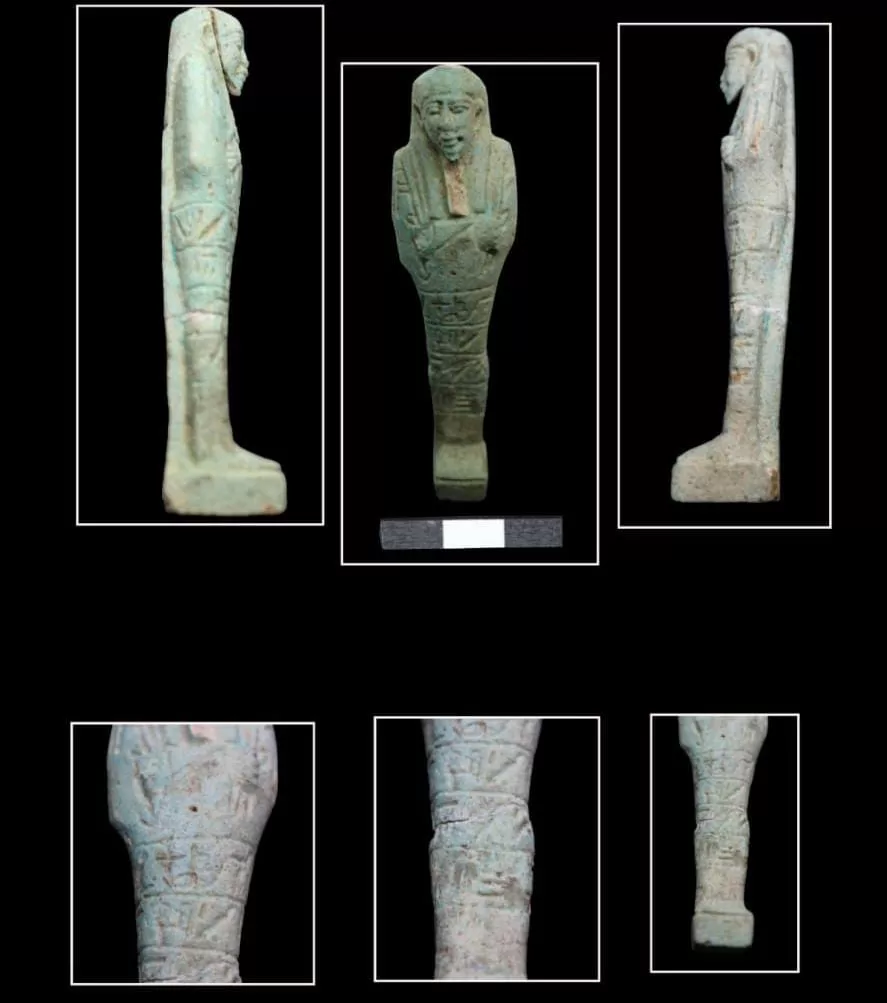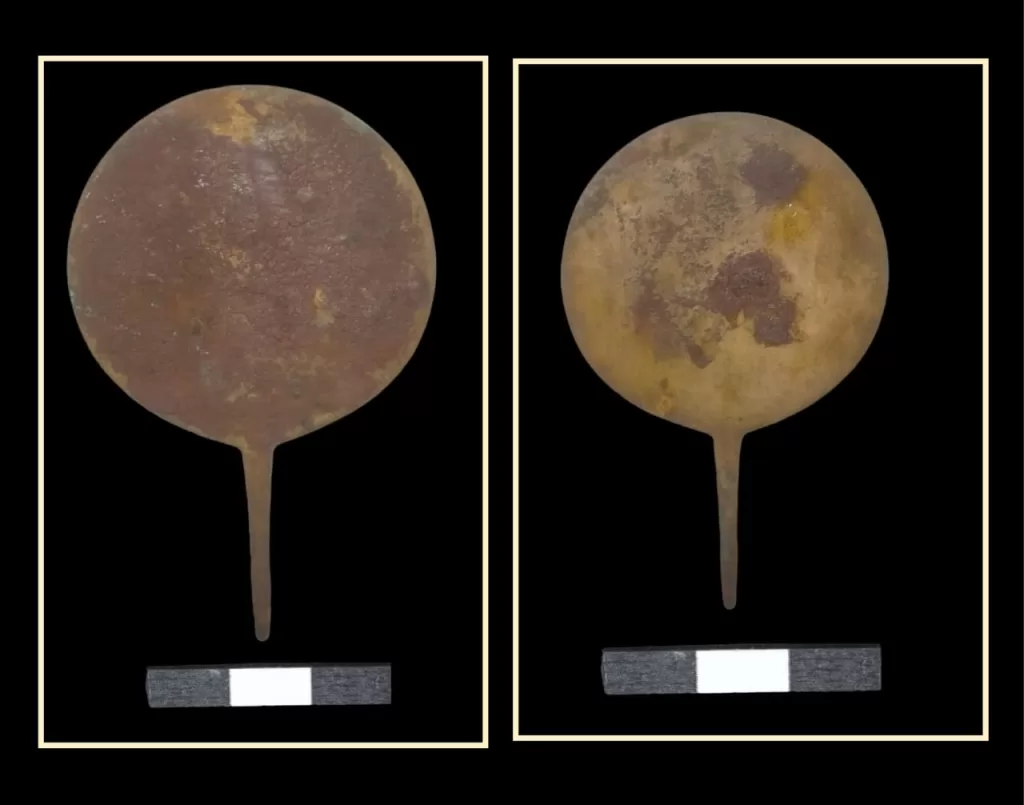Egyptian mission uncovers 63 ancient tombs with gold foil and bronze coins
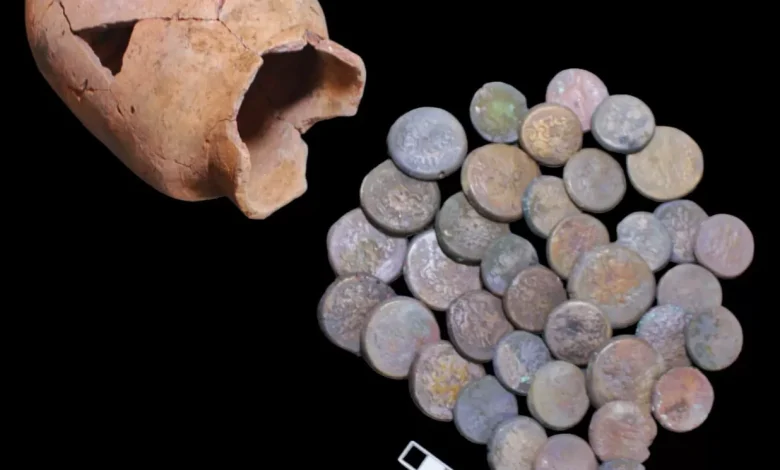
The Egyptian archaeological mission of the Supreme Council of Antiquities has uncovered 63 tombs made of mud bricks and simple burials containing a set of gold foil from the 26th Dynasty of the Late Period (664 BC until 332 BC).
During their excavations in the area of Tal Al-Deir in the new city of Damietta, the mission also found several bronze coins from the Ptolemaic era.
The Ministry of Tourism and Antiquities said that the architectural design of the tombs discovered follows a commonly used model in ancient Egypt during the Late Period. This discovery could potentially lead to a reevaluation of an important historical period for the city of Damietta.
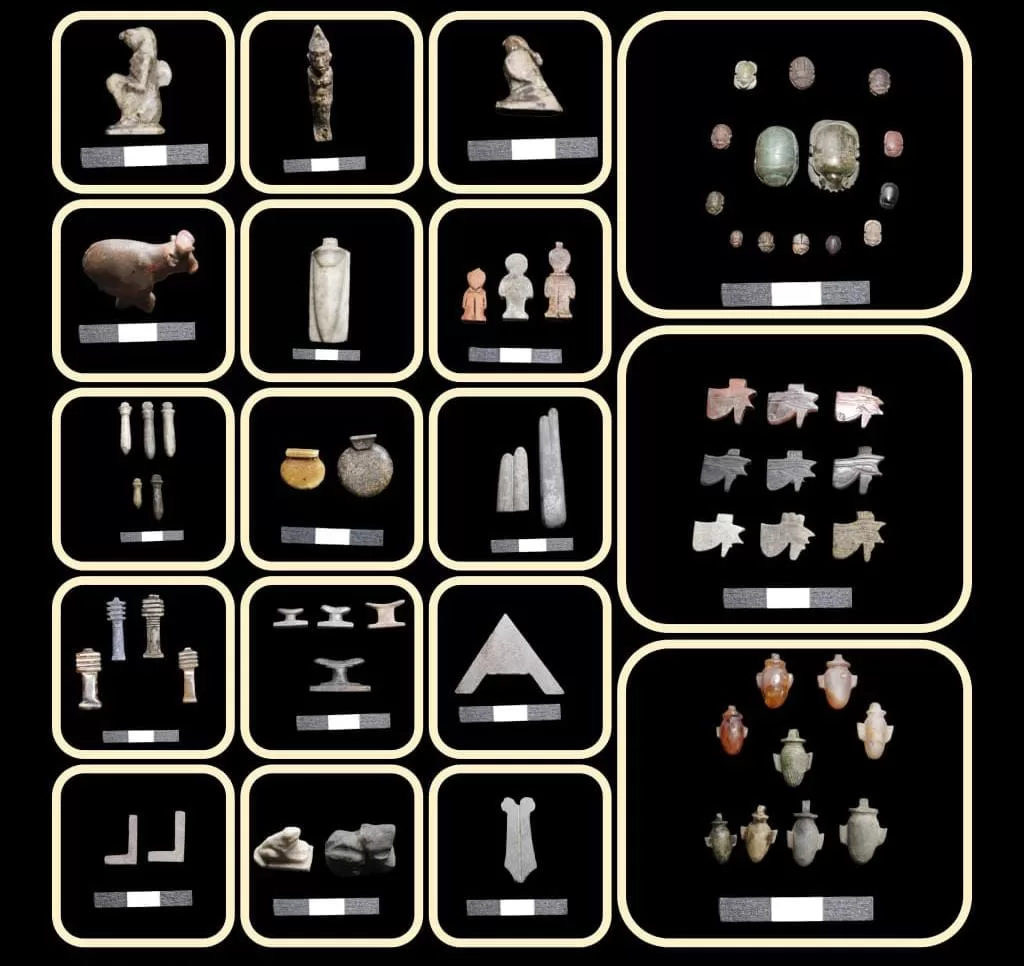
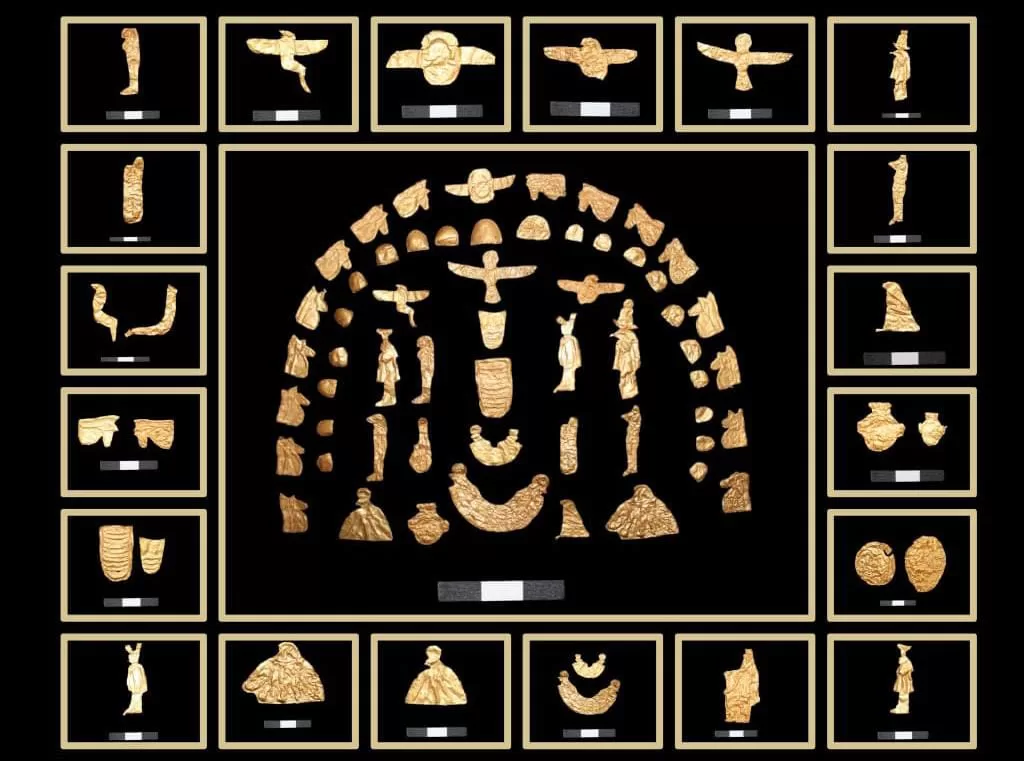
Among the findings inside the tombs were funerary amulets, ushabti statues, pottery, and the remains of simple architectural structures. A pottery pot containing a Ptolemaic-era bronze coin marked with a “38” was also discovered, alongside a collection of imported and locally produced pottery that highlights the trading relationships between Damietta and cities along the Mediterranean coast.
Furthermore, the mission unearthed a large mud-brick tomb containing burials of individuals of high social status, along with gold foil featuring religious symbols and depictions of ancient Egyptian goddesses. The tombs also contained meticulously crafted funeral amulets, showcasing a variety of intricate and finely made industrial products.
